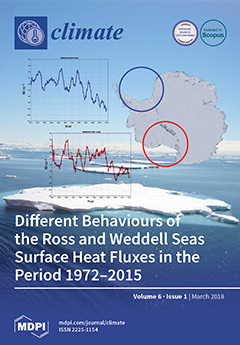The urban climate, especially the near-surface air temperature (
), is influenced to large amounts by urban surface properties on the local-scale. Landscape classification schemes, like the Local Climate Zone (LCZ) concept, classify neighbourhoods on this scale based on their surface properties,
[...] Read more.
The urban climate, especially the near-surface air temperature (
), is influenced to large amounts by urban surface properties on the local-scale. Landscape classification schemes, like the Local Climate Zone (LCZ) concept, classify neighbourhoods on this scale based on their surface properties, neglecting sub-scale heterogeneity in the urban structure and its potential effects on
. To quantify sub-scale
variability, a measurement campaign with eleven stationary
sensors was conducted within one LCZ (class 2
B, compact midrise with scattered trees) in Berlin, Germany, during 22 days in summer 2016. Correlation analyses were performed between observed spatial
differences and micro-scale morphometric parameters around the measurement sites, such as sky view factor and building surface fraction. The results show mean night-time
differences of up to 1 K between the different sites. On a clear, calm and dry day, the daytime difference reached 3 K. At night-time, the variability can be best explained by the building surface fraction within a radius of 50 m. Further, a nocturnal cooling influence of a neighbouring green space could be observed. The observed micro-scale
variability was smaller than
differences to other LCZ classes, highlighting the applicability of the LCZ concept.
Full article





